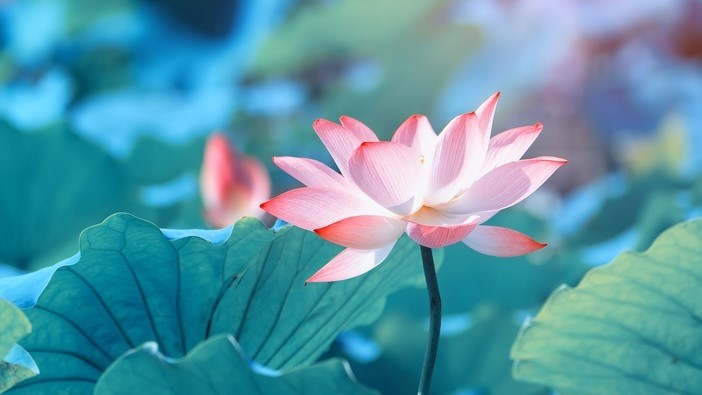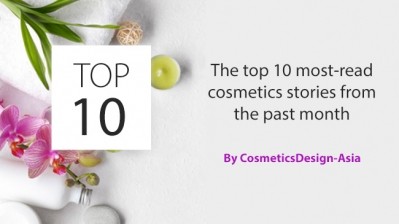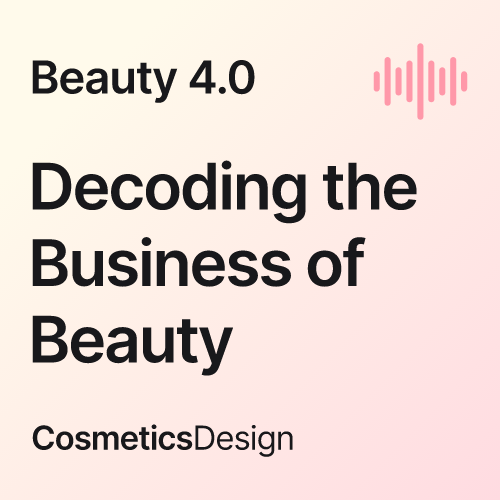Translating tradition: How beauty brands can tap China’s cultural heritage to appeal to young consumers

For the past few years, the Chinese people have begun to embrace their heritage and it seems this nationalistic pride has accelerated due to the novel coronavirus (COVID-19) crisis that hit China first.
This trend has impacted consumers’ buying choice, said Gianvito D'onghia, managing partner of Creative Capital China and Altavia.
“Before COVID-19 this trend was related to stronger interest in Chinese culture and heritage. But after COVID-19, this choice of buying Chinese is related to a show of solidarity,” said D'onghia, who was speaking at WeCOSMOPROF, a digital event held by Cosmoprof Worldwide Bologna.
This is known locally as the ‘guochao’ trend.
“‘Guo’ stands for country… ‘Chao’ stands for Chao Liu, which in [Mandarin] means fashionable. Together, this means traditional elements should be reinterpreted in a very fashionable way in order to attract young consumers,” explained D'onghia.
While it may sound simple, he noted that there are careful steps a beauty brand must take in order to successfully weave the heritage into the brand’s DNA.
The first step is turning culture into an intellectual property (IP) asset.
D'onghia cited the example of the Beijing Palace Museum, which has used cultural content like historic paintings and sculptures but interpreted them in a modern way.
In 2018, the museum launched a cosmetics line incorporating the symbols and imagery found in Chinese history.
“They have reactivated heritage by turning the characters into something that is more interactive, helping them to enter modern life and find a modern way of interacting with consumers,” said D'onghia.
Once a brand has successfully cultivated an IP asset, the next step is to push it out to consumers through social media.
“You have to take about the right channels. We talk about digital every day in China but it’s a complex world. There are many platforms in China work differently and are targeted at different consumers,” said D’onghia.
How beauty brands have utilised ‘guochao’
There have been several beauty brands that have successfully capitalised on Chinese heritage and they have all done so in several ways.
Local brands that have been established around 2016 and 2017 have managed to weave the heritage into their brand DNA through their mission and values.
One such brand is Huaxizi, a beauty brand established in 2017 that has woven a famous Chinese poem into its brand.
“They used this poem to create the brand mission, brand values and brand personality and they convey it in the brand's stylistic codes – in visuals, products and packaging.”
Brands that don’t have the built-in heritage, have turned to incorporating elements of Chinese history through crossover collaborations.
For instance, the Chinese brand Perfect Diary developed a range of eyeshadow palettes inspired by famous geographical regions in China.
This trend is not just suitable for new brands that have been created from scratch, noted D’onghia.
“This also fits older Chinese brands, those that were created in the 20s, 30s and 50s. These brands have the heritage but are perceived as ‘old brands’ by consumers. Some of these brands have relied on this trend by rebranding themselves and reactivating their heritage in a new way.”
One brand that has successfully done so is Dong Er Er Jiao (DEEJ), a beauty and nutrition brand from Shandong that base their products on an ingredient found in Tradition Chinese Medicine (TCM).
“This brand was perceived by young consumers today as a brand of the old generation. So, they reactivated their traditional heritage by creating a new brand, Chinelle. The brand kept the ingredients but reactivated the heritage in a more fresh and modern way,” elaborated D’onghia.
It is not just local brands that can take advantage of this trend. Many international brands have recently been relying a lot on these local cultural trends in order to localise their image.
D’onghia noted that the challenge for international brands is balancing their brand DNA while trying to be relevant to local consumers.
In order to do this, some beauty brands have leveraged on the power of local brands and co-branding limited edition products.
Some more famous collaborations include Fenty Beauty’s collaboration with Hey Tea, the best-selling bubble milk tea brand in China as well as Korean brand MIssha’s collaboration with Zhou Hei Ya, a traditional Chinese brand that sells spicy duck neck snacks.
D’onghia concluded: “Co-branding is not simply putting A and B together. The two brands need to consider if there’s a fit between their DNA and find an interesting way to mix the elements of these two brands, then convey it creatively from a design and delivery perspective.”









![Indus Valley is working to corner 30% of India's online premium boxed hair colour market. [Indus Valley]](/var/wrbm_gb_food_pharma/storage/images/_aliases/wrbm_tiny/publications/cosmetics/cosmeticsdesign-asia.com/article/2024/07/26/indus-valley-aims-to-secure-30-of-india-s-online-premium-hair-colour-market-with-organic-offerings/17594932-5-eng-GB/Indus-Valley-aims-to-secure-30-of-India-s-online-premium-hair-colour-market-with-organic-offerings.jpg)
![[Getty Images]](/var/wrbm_gb_food_pharma/storage/images/_aliases/wrbm_tiny/publications/cosmetics/cosmeticsdesign-asia.com/china/china-focus-latest-developments-in-china-s-booming-beauty-market25/17606695-1-eng-GB/China-focus-Latest-developments-in-China-s-booming-beauty-market.jpg)
![Kosé has launched makeup brand Visée in Singapore as part of plans to reinforce its position in SEA. [Visée]](/var/wrbm_gb_food_pharma/storage/images/_aliases/wrbm_tiny/publications/cosmetics/cosmeticsdesign-asia.com/headlines/business-financial/visee-singapore-kose-aims-to-enhance-brand-visibility-in-sea-with-new-launch/17587264-1-eng-GB/Visee-Singapore-Kose-aims-to-enhance-brand-visibility-in-SEA-with-new-launch.jpg)
![ble C&C is set on reinforcing its competitiveness in China’s beauty market. [Missha]](/var/wrbm_gb_food_pharma/storage/images/_aliases/wrbm_tiny/publications/cosmetics/cosmeticsdesign-asia.com/headlines/business-financial/able-c-c-aims-to-strengthen-competitiveness-in-china-through-online-expansion-kol-collabs/17591626-1-eng-GB/Able-C-C-aims-to-strengthen-competitiveness-in-China-through-online-expansion-KOL-collabs.jpg)

![LG H&H genetic study says 23 genetic regions affect natural skin tone. [Getty Images]](/var/wrbm_gb_food_pharma/storage/images/_aliases/wrbm_tiny/publications/cosmetics/cosmeticsdesign-asia.com/article/2024/07/23/lg-h-h-discovery-of-genetic-skin-tone-factors-in-east-asians-potentially-key-to-skin-radiance-developments/17587210-1-eng-GB/LG-H-H-discovery-of-genetic-skin-tone-factors-in-East-Asians-potentially-key-to-skin-radiance-developments.jpg)

![DR.CI:LABO expects brand-supplier partnerships gain more public prominence as consumers interest in skin care grows online. [Dr.Ci:Labo]](/var/wrbm_gb_food_pharma/storage/images/_aliases/wrbm_tiny/publications/cosmetics/cosmeticsdesign-asia.com/article/2024/07/22/brand-supplier-partnerships-will-come-to-the-fore-amid-the-online-skin-care-landscape-dr.ci-labo/17576755-1-eng-GB/Brand-supplier-partnerships-will-come-to-the-fore-amid-the-online-skin-care-landscape-DR.CI-LABO.png)


